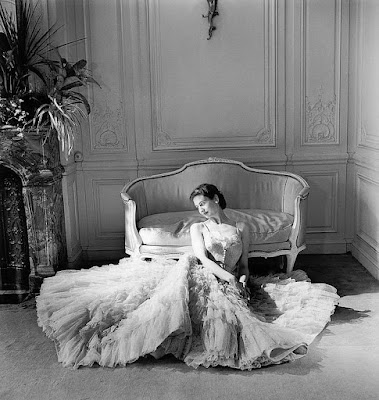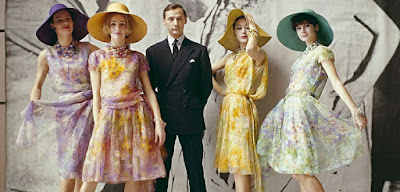Dior Couture house has always stood for glamour, elegance and luxury. Although Monsieur Christian Dior spent only 10 years designing and directing his brand, it was enough time for him to create history in fashion and present something glamorous, with his NewLook, after the dark days of the war.
Dior's legacy was masterful cuts and tailoring, celebrating the female form, exotic and historical influences and lastly theatrical presentation.
A Brief History
Christian Dior opened his own fashion house in 1947 while Paris was still under the Nazi occupation.
As a child, he had a passion for flowers, which influenced his work as a designer later in life.
He studied a political science course and then pursued his passion for arts. He then studied music composition that lead him to develop his personal tastes. This whole influence by art lead him to anonymously open an art gallery where he traded artwork for Pablo Picasso, Henri Matisse, Max Jacob...
He worked as a designer for Lucien Lelong, then for Robert Piguet. He also worked alongside Pierre Balmain.
Dior's Influence on Fashion
World War 2 lead to fabric rationing. Fashion and outfit silhouettes for women reflexted that time of regression. French fashion lost its glamour and glory due to the war. Dior then presented a collection "New Look" which contrasted the austerity of the war years, giving back the femininity and elegance to the women.
The New Look silhouette presented the shape of an inverted flower; accentuated curves, nipped in waist and a full skirt with lots and lots of fabric.
His designs later became less extreme, more gentle and wearable.
Designers after Dior
Dior died after 10 years of heading hos house and other designers took over.
Yves Saint Laurent (1957-1960)
Yves Saint Laurent wotked for Dior since 1955 and took over the creative role after his death. He introduced the "Trapez" line and his creations were prescient. He was called to the military service and had to leave the fashion house.
Marc Bohan (1961-1989)
Bohan was deeply respectful of Dior's and haute couture traditions. He launched "Miss Dior" ready-to-wear line in 1967, in addition to "Baby Dior" and "Dior Homme" fashion line. He provided a timeless elegance essential to the longevity of Dior.
Gianfranco Ferre (1989-1996)
He was Italian with a background in ready-to-wear,which is important since few women could afford haute couture. He stayed true to the New Look yet left his own mark with with exaggerated elements, flared sleeves and billowing skirts.
John Galliano (1996-2011)
His flamboyant feminine gowns were inspired by Dior's own love for the exaggerated female form. He even gave his own twist on Dior's beloved Belle Epoque. Galliano created a truly remarkable variety of designs for the fashion house.
Bill Gaytten (2011-2012)
Bill Gaytten worked alongside Galliano for 23 years, he was only a temporary replacement. He wasn't treated very well by the fashion press. He used the New Look as a base for his designs as well as Galliano's style with the exaggerated silhouette.
Raf Simons (2012-2015)
Raf Simons recreated the simplicity of Dior's first collection. He reconstructed the legacy of Dior, he brought energy to the label with precise cuts, use of brightly coloured materials and his inclination towards ergonomic shapes.
Maria Grazia Chiuri (2016-Present)
The first female creative director of Dior. Her moto is to create fashion that resembles the women of today, believing that clothes should answer the needs for being practical, aesthetic and political. Maria Grazia Chiuri took the brand from being 'feminine' to becoming 'feminist'.
Miss Dior and Lady Dior
There is a story behind these two famous names. The fragrance "Miss Dior" was inspired by Dior's love for flowers and his favourite sister Catherine, they were discussing names for the perfume when his sister walked into the room and someone said 'Look there's Miss Dior', so that's how they came up with the name.
The "Lady Dior" bag was named after Princess Diana because she used this style so much. Originally it was called "Chouchou" then "Princess".

















